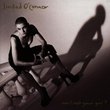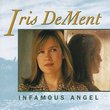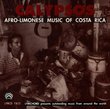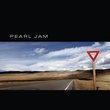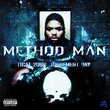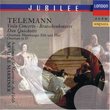| All Artists: Ewan MacColl, A.L. Lloyd Title: Blow Boys Blow Members Wishing: 0 Total Copies: 0 Label: Tradition Records Original Release Date: 1/1/1957 Re-Release Date: 9/3/1996 Genres: Folk, International Music, Pop Styles: Traditional Folk, British & Celtic Folk, Contemporary Folk, Singer-Songwriters Number of Discs: 1 SwapaCD Credits: 1 UPC: 600491102421 |
Search - Ewan MacColl, A.L. Lloyd :: Blow Boys Blow
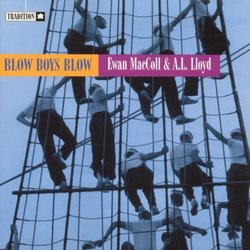 | Ewan MacColl, A.L. Lloyd Blow Boys Blow Genres: Folk, International Music, Pop
|
Larger Image |
CD DetailsSimilarly Requested CDs
|
CD ReviewsA Whale of a CD otserick | Bordentown, New Jersey | 11/13/2001 (5 out of 5 stars) "I grew up with the record version of this CD and wore out the grooves. It's gutsy, real and sometimes very odd. No wonder Frank Zappa owned a copy (he lent it to Captain Beefhart who never returned it). This what folk music used to be all about --the thoughts and feelings of working people, rarely pretty but always beautiful." Essential Ewan MacColl Michael C. Molloy | 12/05/1999 (4 out of 5 stars) "One of my favorite of MacColl's records. Only the fact that about half the songs are by A.L. Lloyd, who I don't like as much, makes this a four-star review, instead of five. A lot of sea-shanty cds are pretty sappy stuff; they sound like they're some guy's idea of what sea shanties should sound like. This record sounds like someone singing excellent songs. Is this an authentic version of sea shanties? Beats me, since I never was on a 19th-Century sailing ship; but it sure is a good cd." Very good collection with many different voices B. Marold | Bethlehem, PA United States | 08/14/2005 (4 out of 5 stars) "Sea chanties may be the purist and richest form of work song extant today and there are a large number of CDs of performances of this very traditional kind of song. Four of the very best are:
`Blow the Man Down' by eleven different voices, one of which is a group, The Watersons. `Blow Boys Blow' sung by Ewan MacColl & A. L. Lloyd `Sailors, Ships, and Chanteys' by Louis Killen `Blow the Winds in the Morning' choral interpretations directed by John Langstaff The best thing about this selection is that in spite of the great similarity in the names of the albums, there is practically no overlap in selections. There is some difference in style among the four, as chanteys may be performed with a solo voice, a chorus, or alternating between a solo voice and chorus. The last of these three styles is probably the most traditional, as it is closest in realization to how chanties were actually used, as a means of coordinating the efforts of a large number of men contributing their muscle power to a single task such as raising an anchor or raising or lowering a large sail boom. The first of these four CDs is a mix of all styles. The second is primarily solos by the two principle artists. The third is a combination of solos and responsive singing, the chorus being supplied by a group playfully named `The Out-of-Shape Chanteymen' The fourth is largely choral interpretations. As appropriate to what one would find on a wind powered ship, the instrumental accompanyment is typically no more than a banjo, guitar, mandoline, or concertina. It's interesting that the harmonica does not play a larger part in chanty accompaniments, but it strikes me that this would detract from the overriding importance of the voice in joining in with the chorus. Similarly, there is no hornpipe, let alone bagpipes heard on any of these recordings. If I were to recommend any one of these albums, it would be the third, since Master Killen has the finest tenor voice among all the performers. It also strikes me that his selection of songs is just a bit more fun than the others. The CD with the most rustic performances is `Blow the Man Down' with a lot of really crusty solos by Killen, Ewan Maccoll, Cyril Tawney, The Waterssons, Sam Larner, Ian Campbell, Bob Davenport, Bob Roberts, Harry H. Corbett, Bob Hart, and A. L. Lloyd. All these albums are satisfying to anyone with a yen for sea songs. " |

 Track Listings (16) - Disc #1
Track Listings (16) - Disc #1
